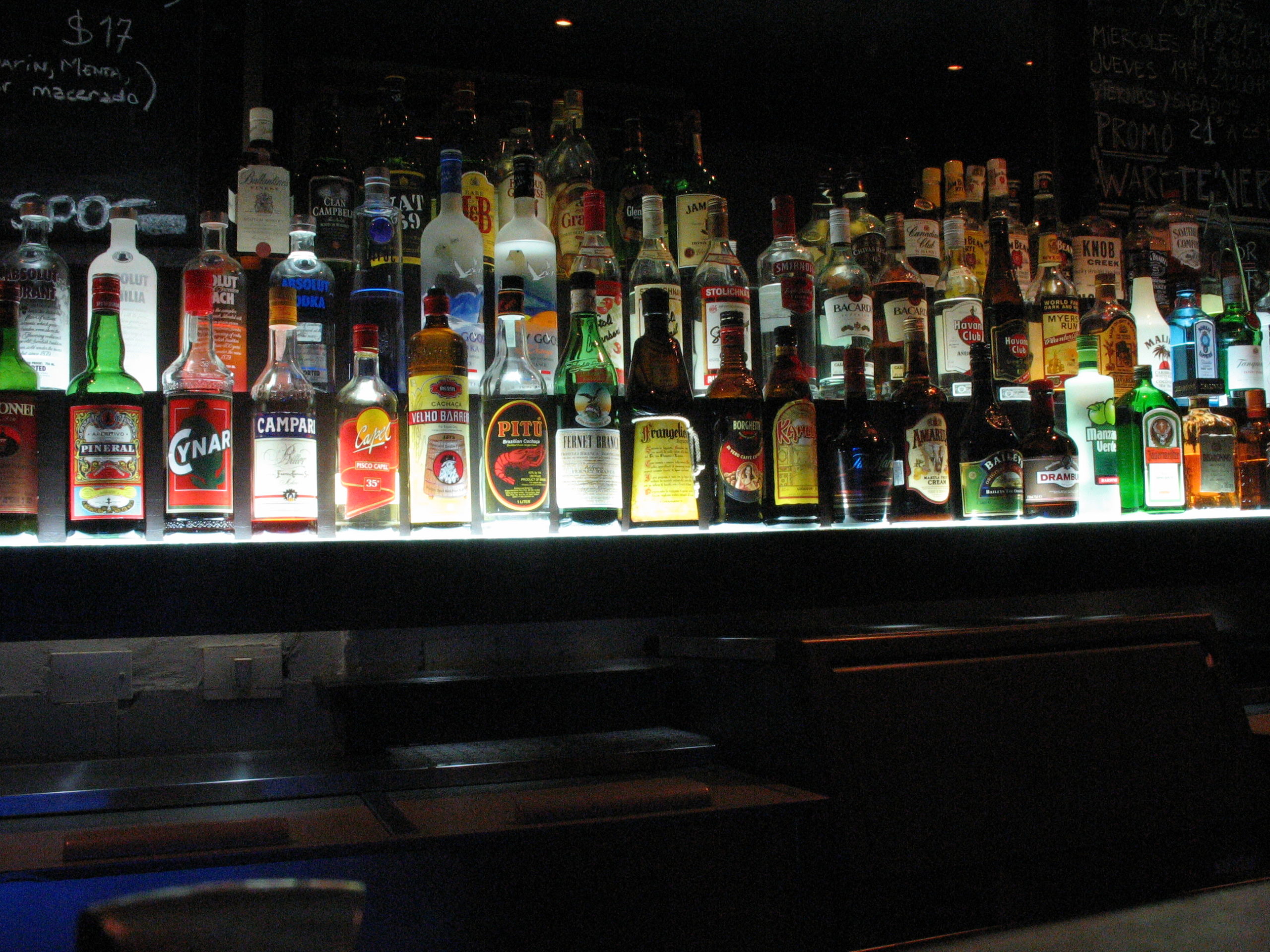The SCD Diet and Alcohol: Part III – The SCD Guide to Liquors

In Part II, we discussed wine which is made through the process of fermentation. In this guide, we will examine liquors, which are drinkable liquids containing ethanol made by distilling fruits, grains or vegetables. If you missed Part I, make sure you go back and read it to have a better understanding of how alcohol affects your digestive system.
Understanding Liquor and Liqueur
A liquor, or spirit, is a liquid of at least 20% alcohol by volume (ABV) made using a distillation process. A liqueur, or cordial, is an alcoholic beverage that is made with added sugar and flavored with spices, herbs and or other aromatic flavor enhancers. A liqueur can be of any alcoholic content by volume where as most liquors are federally mandated to be at least 40% ABV. Labeling laws of developed countries are the one clue we can use to decide if an alcoholic drink is legal on the SCD diet. If a bottle of liquor doesn’t specifically call out what kind of product it is (whiskey, vodka, etc.), then it is probably certain to be a liqueur of some type. To get familiar with the many types of liqueurs check out this list.
The Illegal List
If you are anything like me, you’ll want to understand more about why certain types of alcohols were illegal. I already covered sweet and dessert wines in part II. Beer is in the same boat with sweet wine, the fermentation process isn’t completed therefore beer contains plenty of sugars, grains and is made using yeast (illegal). We covered why Liqueurs and cordials are illegal and yes American Schnapps is a type of liqueur. But what about Brandy, Cognac, Port Wine, and Sherry?
Brandy is considered a spirit and is made from distilling wine, however the problem lies in the fact that most brandy is finished with sugar and caramel color additives. Cognac is actually a type of brandy that is very heavily regulated. I originally had high hopes only to find out that it is usually finished with sugar and caramel additives as well (except probably some extremely expensive brands). Port wines are wines that are prematurely stopped during the fermentation process by adding a natural grape spirit called aguardiente. This leaves residual sugars in the port wine making it illegal. Lastly, Sherry is drink that starts off as a fully fermented wine but then it is fortified with brandy making it illegal.
The Legal List
Vodka is considered by many to be the “cleanest” liquor available. This is because it has the lowest level of fusel oils and congeners compared to other liquors (all distilled alcohols will contain some level of these by-products). Vodka can be distilled from any plant matter high in sugars or starches. Many types of vodka are made from grains such as corn, rye, wheat, and sorghum. However, vodka is also made from potatoes, molasses, sugar beets, soy beans and grapes. Vodka is usually distilled multiple times and distillers use many means of filtering (usually charcoal) to eliminate colors and flavors. This is what contributes to vodka being considered the cleanest of liquors. In the United States and Europe, by law vodka cannot have a distinct aroma, character, color or flavor. Vodka is normally distilled to at least 80% alcohol and sometimes as high as 96% ethanol. It is then cut down by water to 40% for sale.
Gin is a distilled liquor flavored from juniper berries and made from any type of neutral spirit (odorless, colorless, flammable alcohol). Gin, by law, is created two different ways. In what is considered the higher quality; a neutral spirit is re-distilled with the addition of juniper berries to flavor and create gin. The second method is called compound gin and it is created by mixing neutral spirits with “natural flavorings” without re-distilling the liquid to get the juniper berry taste. Gin’s natural flavors are usually citrus and spices. There are many different types of gin defined by international law, the largest and most well known subgroup of gin being London dry gin. London dry gin can be flavored in any way but no sugar can be added and it can only be cut down with water (usually distilled to at least 80% ABV). Gin is required by law in the U.S. to be at least 40% alcohol.
Whiskey is distilled liquor made from grain mashes. Whiskeys are strictly regulated worldwide and can be made from several types of grains including: barley, malted barley, rye, malted rye, wheat and corn (maize). Whiskeys are broken down into sub-classifications based on the grain that is used. However, all whiskeys are distilled to 80 to 90% ABV and then cut down with water. Whiskey obtains most of its flavoring from the type of cask (usually wooden) it is used to age in. Even without understanding the sub-classifications of whiskeys it is useful to know that all whiskeys are legal on the SCD diet.
- Bourbon Whiskeys are primarily American whiskeys made from at least 51% corn mash
- Rye Whiskeys are broken down into two sub-types: American rye whiskey, which is made from at least 51% rye, and Canadian rye whiskey, which doesn’t necessarily have to be made from rye but most possess characteristics of Canadian rye whiskeys to be labeled a rye whiskey
- Corn Whiskey must be made from at least 80% corn mash
- Scotch Whiskeys are required by international law to be made in Scotland. They are distilled two or three times and then aged for a minimum of 3 years in oak casks
- Irish Whiskeys are required by international law to be made in Ireland. They are usually distilled 3 times and are required to be aged in wooden casks for at least 3 years
The “Drink at Your Own Risk” Liquors
Rum and Tequila are not called out in the legal/illegal list on pecanbread’s list. However, I did find an old letter from Elaine saying that consuming light rum was okay but not dark rum, but I was unable to find anything in the SCD world that speaks on Tequila.
Rum is made from sugarcane by-products such as molasses and sugarcane juice. It is produced by adding yeast and water to the sugarcane by-product to start the fermentation process. Once fermentation has taken place the resulting liquid is distilled. After the distillation process the rum is usually aged in wooden barrels or metal casks. Rum is a rather unregulated word that leaves producers open to use any kind of production process. Because of this rum can only be broken down into general sub-classifications:
- Light Rums, also known as sliver or white rums, have very little taste and are usually filtered after the distillation process to remove coloring
- Gold Rums, also known as amber rums, have more color and flavor than light rums due to being aged longer in wooden barrels and are not usually filtered
- Dark Rum, also known as black rum, are darker in color and have a stronger flavor than gold or light rums. This is usually due to be them being aged longer in charred wooden barrels. The taste is usually slightly spicy with caramel and molasses overtones. These are the types of rums usually used in baking
- Spiced Rums, which get their flavors from added spices and sometimes caramel, and many times artificial coloring or flavoring is used
Based on the fact that Elaine stated she was okay with the occasional use of light rum, I think it is fair to assume that light and gold rums are relatively safe to consume on the SCD diet. When evaluating dark and spiced rums, the picture becomes a bit more clouded unless you get written validation from the manufacturer that these rums may have artificial additives, therefore making them SCD illegal. I would also caution people that rums are made using yeast which may or may not be completely consumed during the fermentation process making rum a more risky liquor to consume on the diet.
Tequila is a blue agave based spirit. It is produced mainly around the city of Tequila, Mexico (hence its name). The production starts by harvesting the piñas (core) from the blue agave plant. The piñas are then broken down and yeast is added to start the fermentation process. After fermentation is complete, tequila is usually distilled 2 or 3 times. The tequila is then diluted down to be sold at 40% ABV. There are two main types of tequila: the first is made using only the blue agave during the production process and it is called 100% agave (heavily regulated by the Mexican government). The other type of tequila, called mixtos, are made up of blue agave and up to 49% of other sugars. Per Mexican guidelines to be called “tequila” the liquor must be made in Mexico, made with 100% natural ingredients, and contain at least 35% ABV.
My take on tequila is that you should probably avoid it while on the SCD diet. According to the Mexican government regulations, all natural ingredients must be used in the production of tequila. Manufactures may add caramel coloring, glycerin, and sugar based syrups to flavor it. Also remember that yeast is used to ferment the blue agave sugars which could cause trouble for people with digestive problems.
Wrapping It Up
If you choose to indulge in a drink or two on the SCD diet you will probably not cause any significant digestive repercussions. However, in my mind there are two key points to take home from our discussion of alcohols. The first is that moderation is the key; stick to one to two drinks once or twice a week at most. The second is to become informed and diligently choose a type of SCD legal alcohol to drink.
Hopefully this article has cleared the air around consuming alcohol on the SCD diet. However, if you think I left anything out or want a more thorough explanation leave some feedback below.
-Steve
Did You Like this Article?
Subscribe to our newsletter to receive email notifications, some ways to find relief, and next steps.
